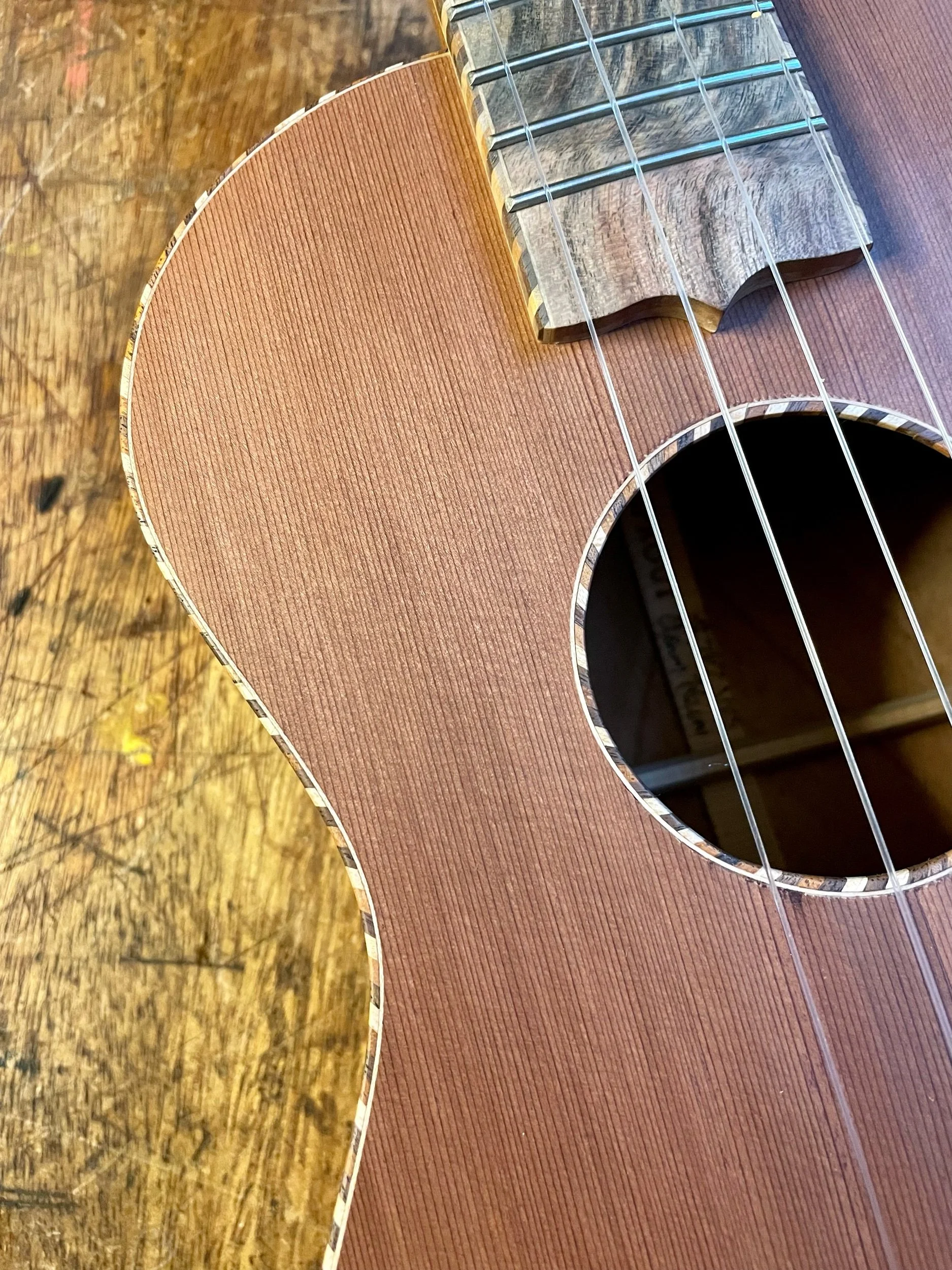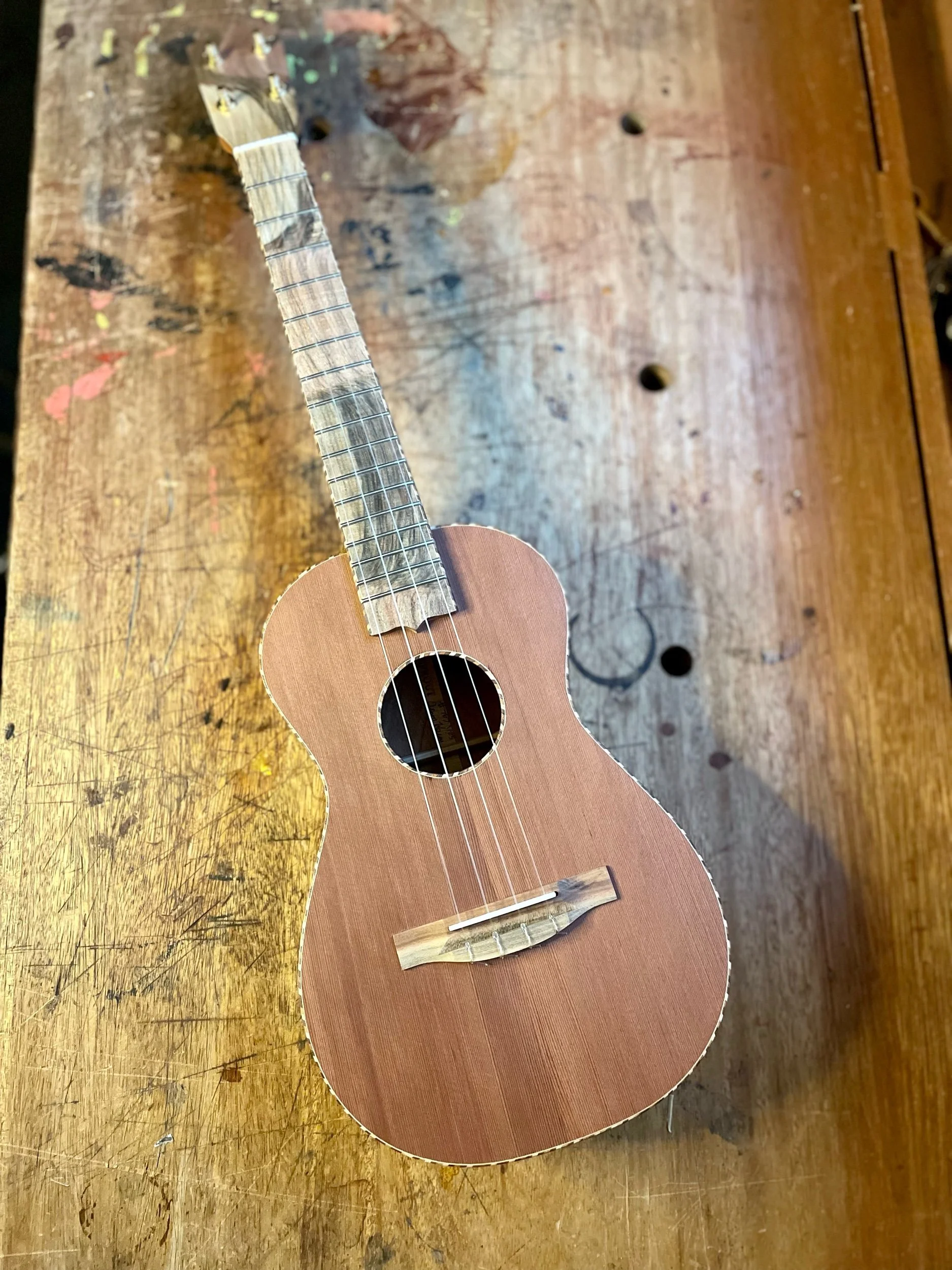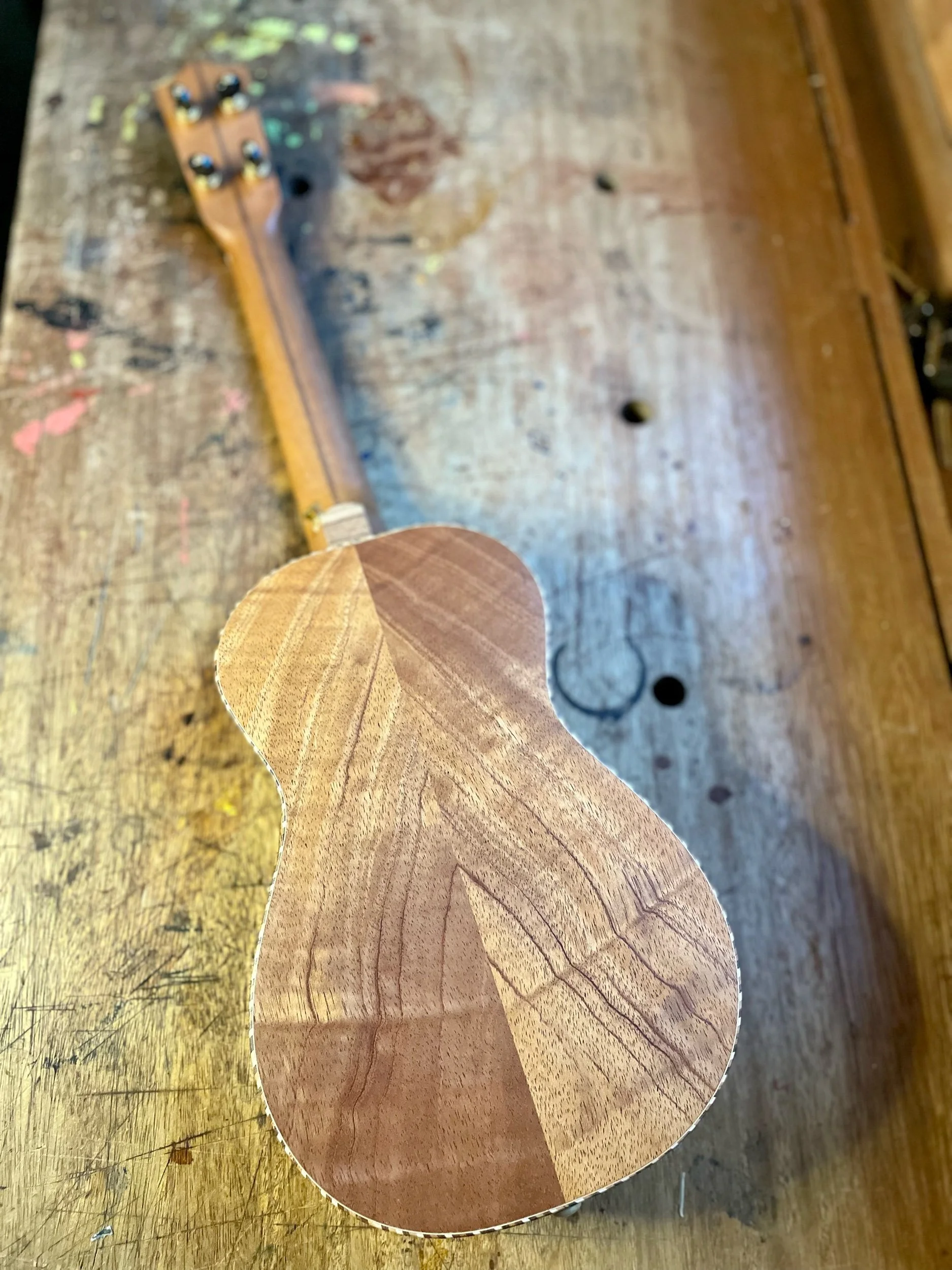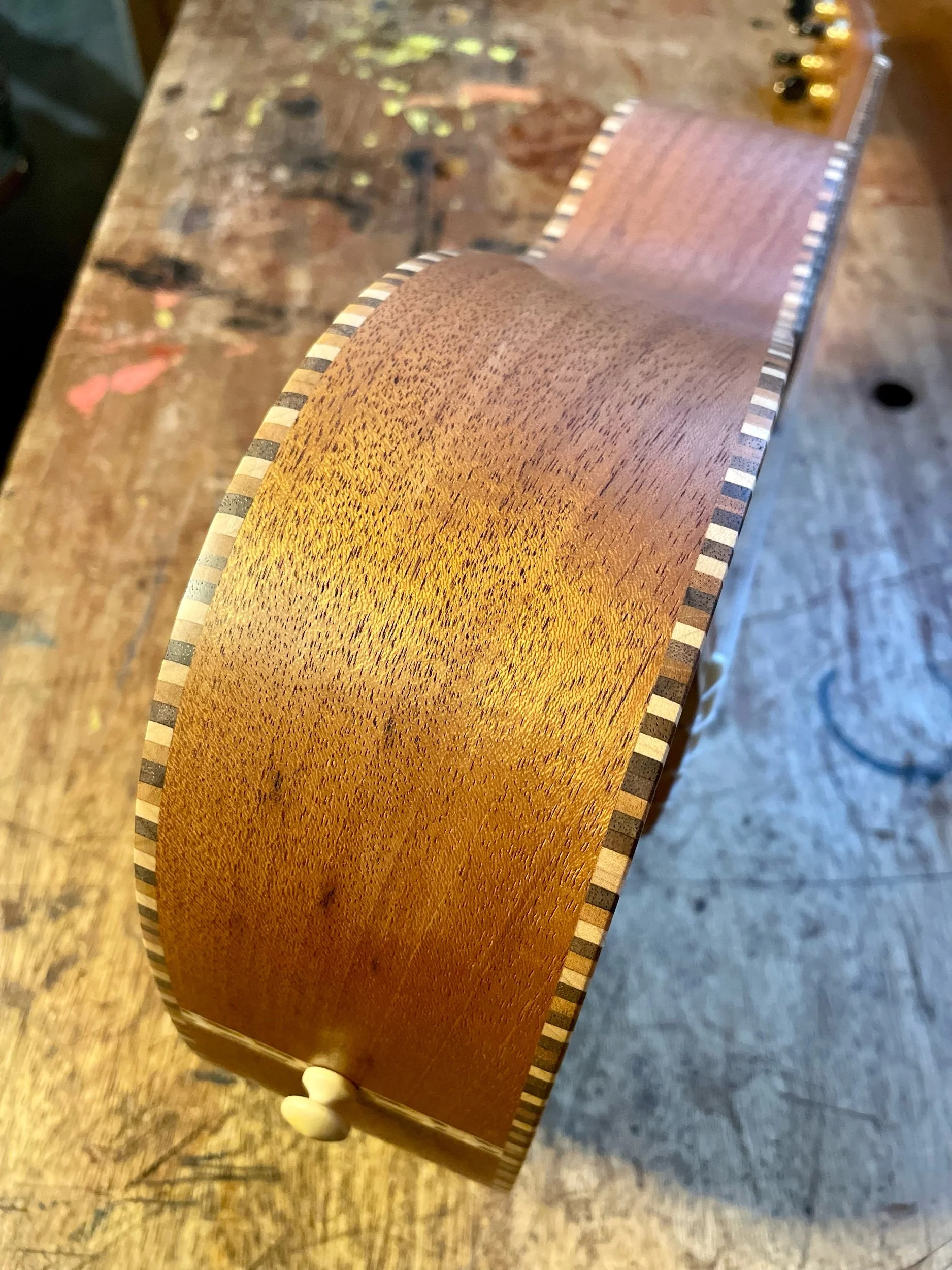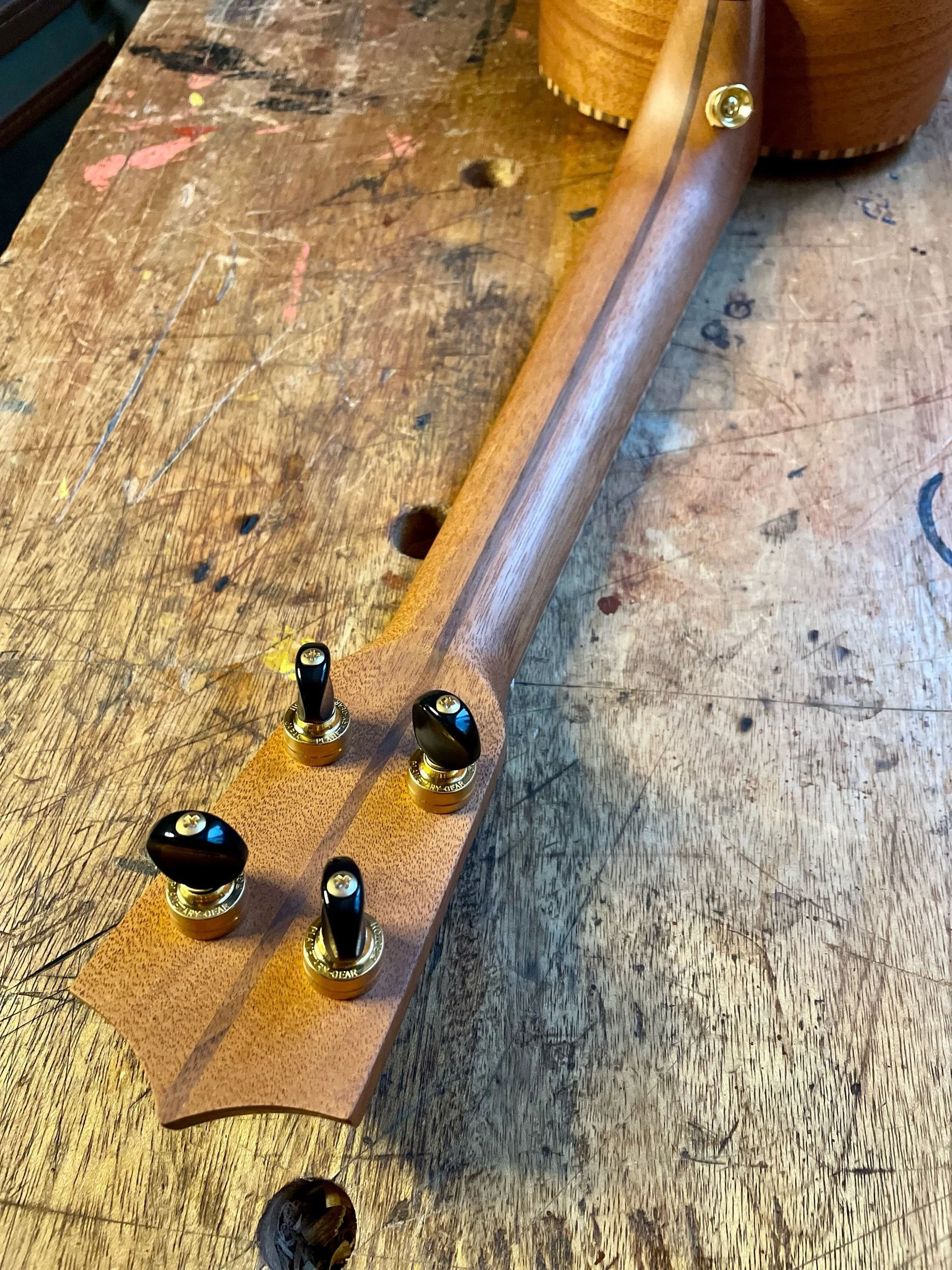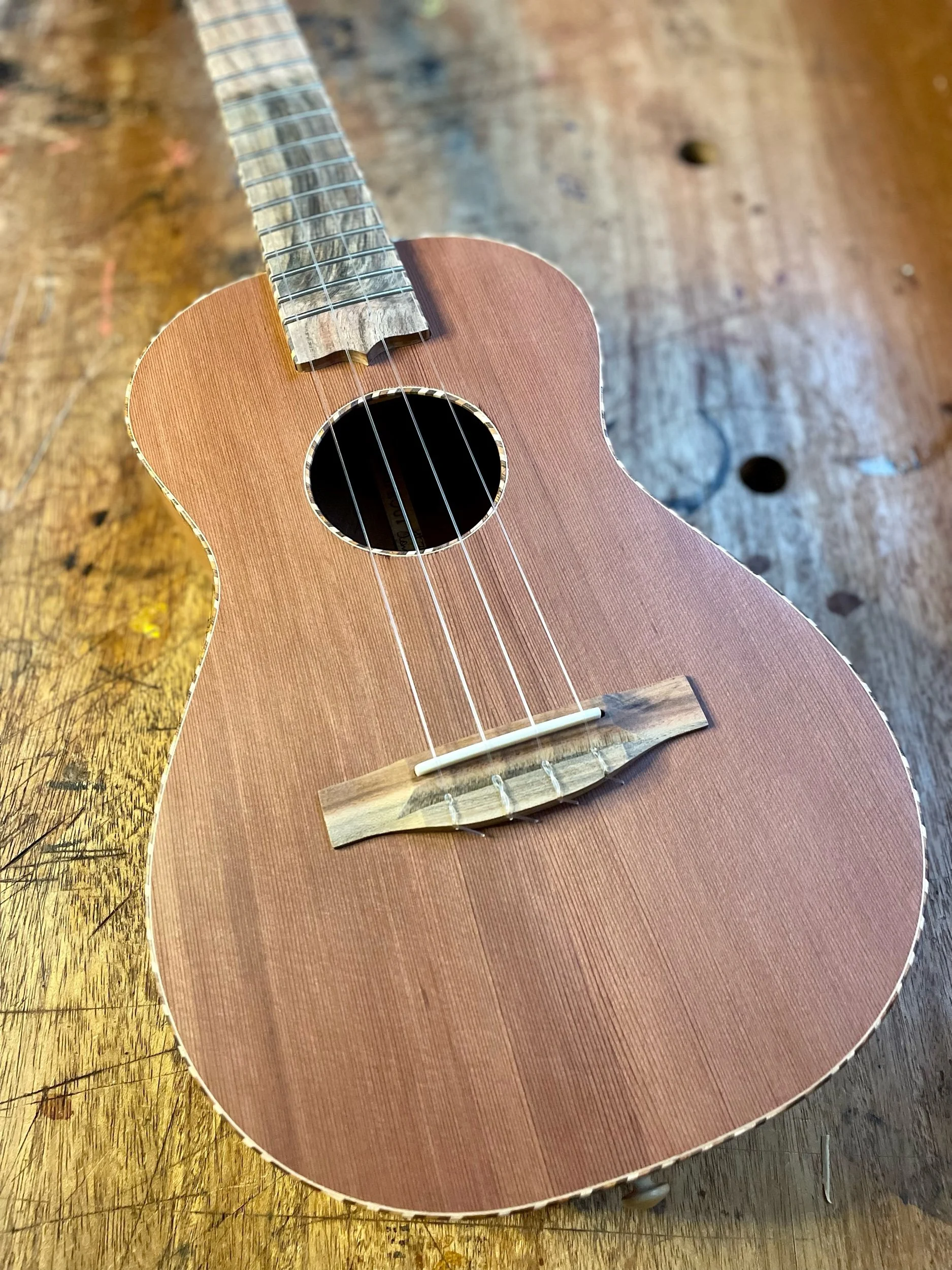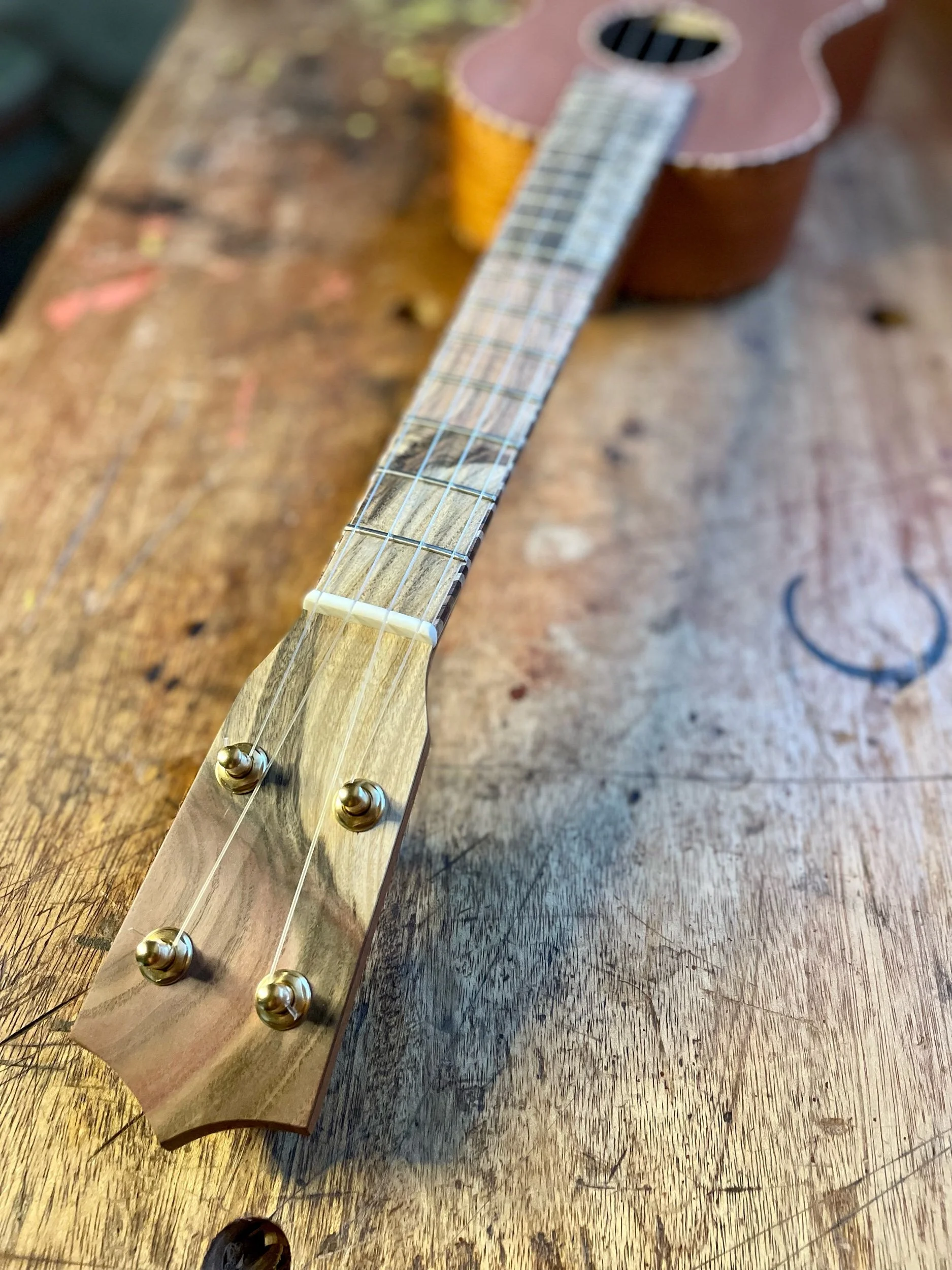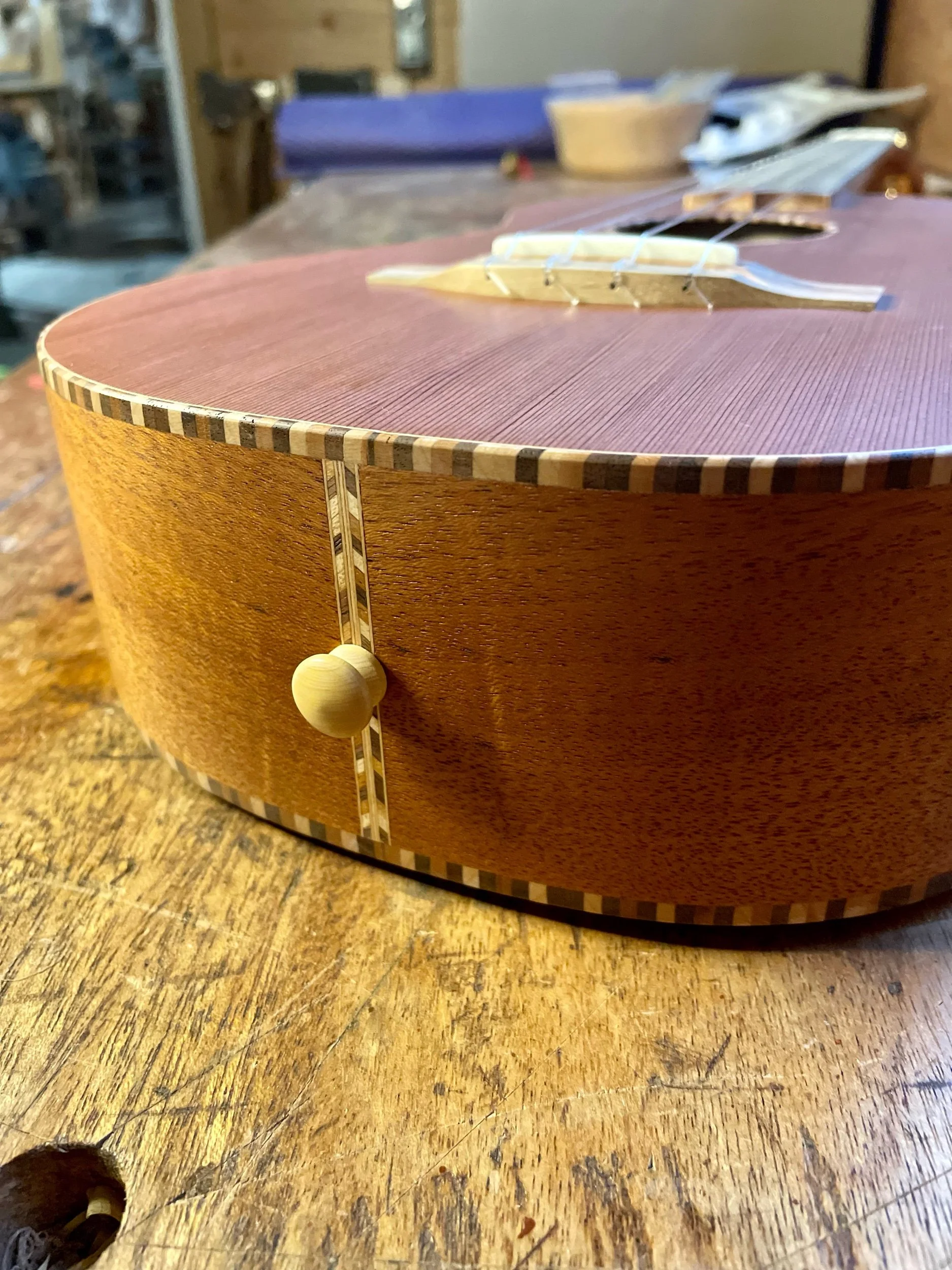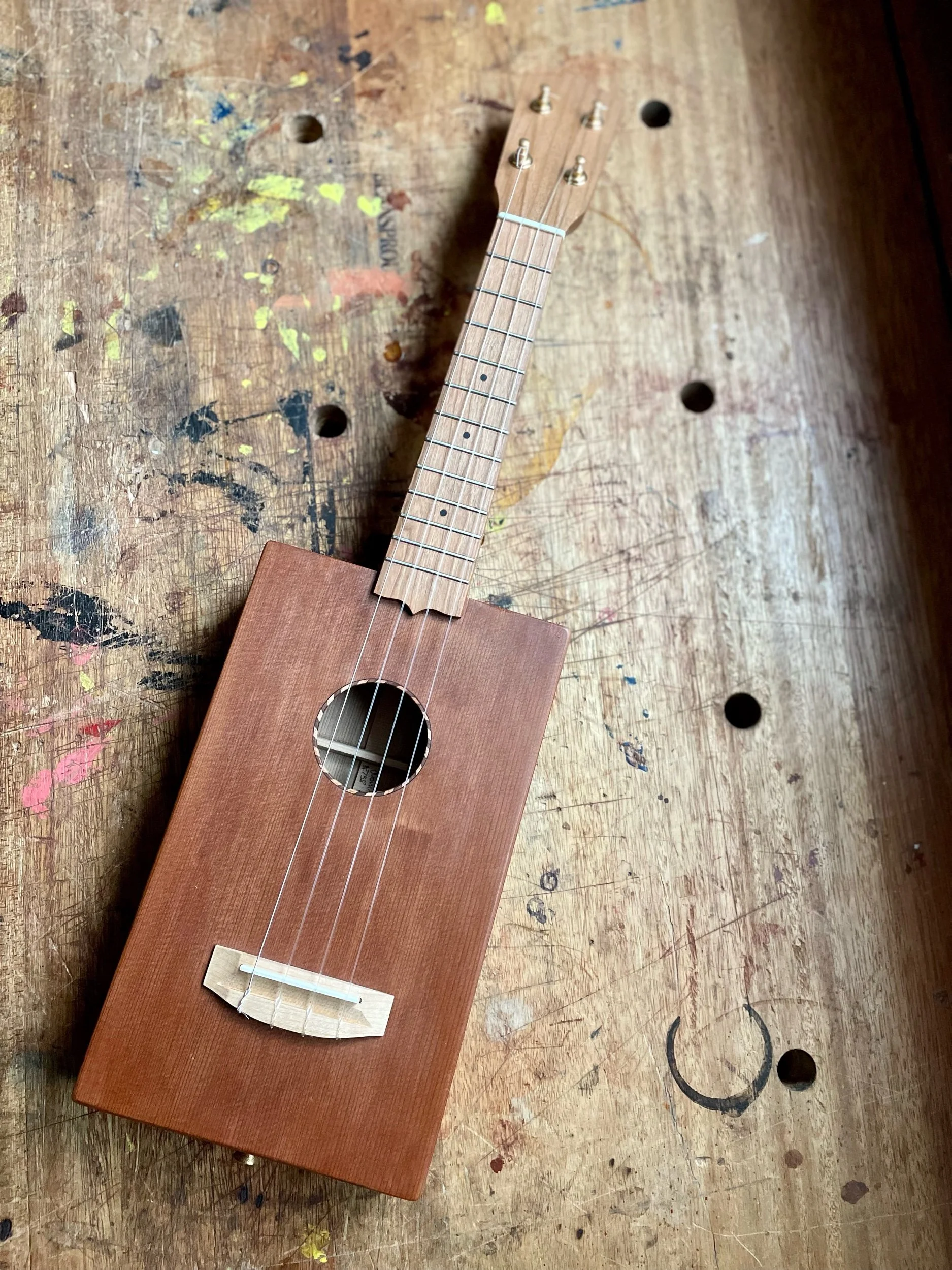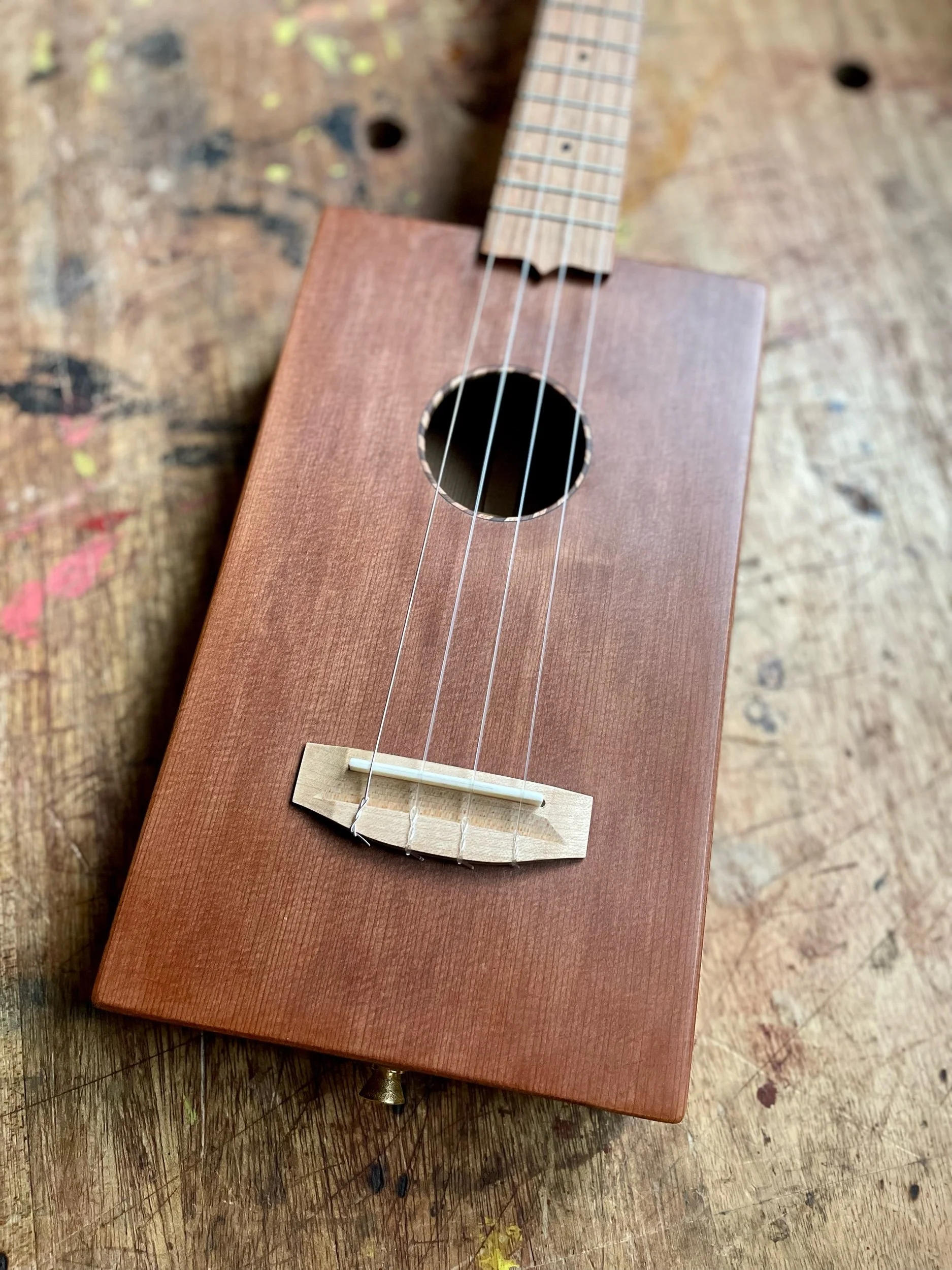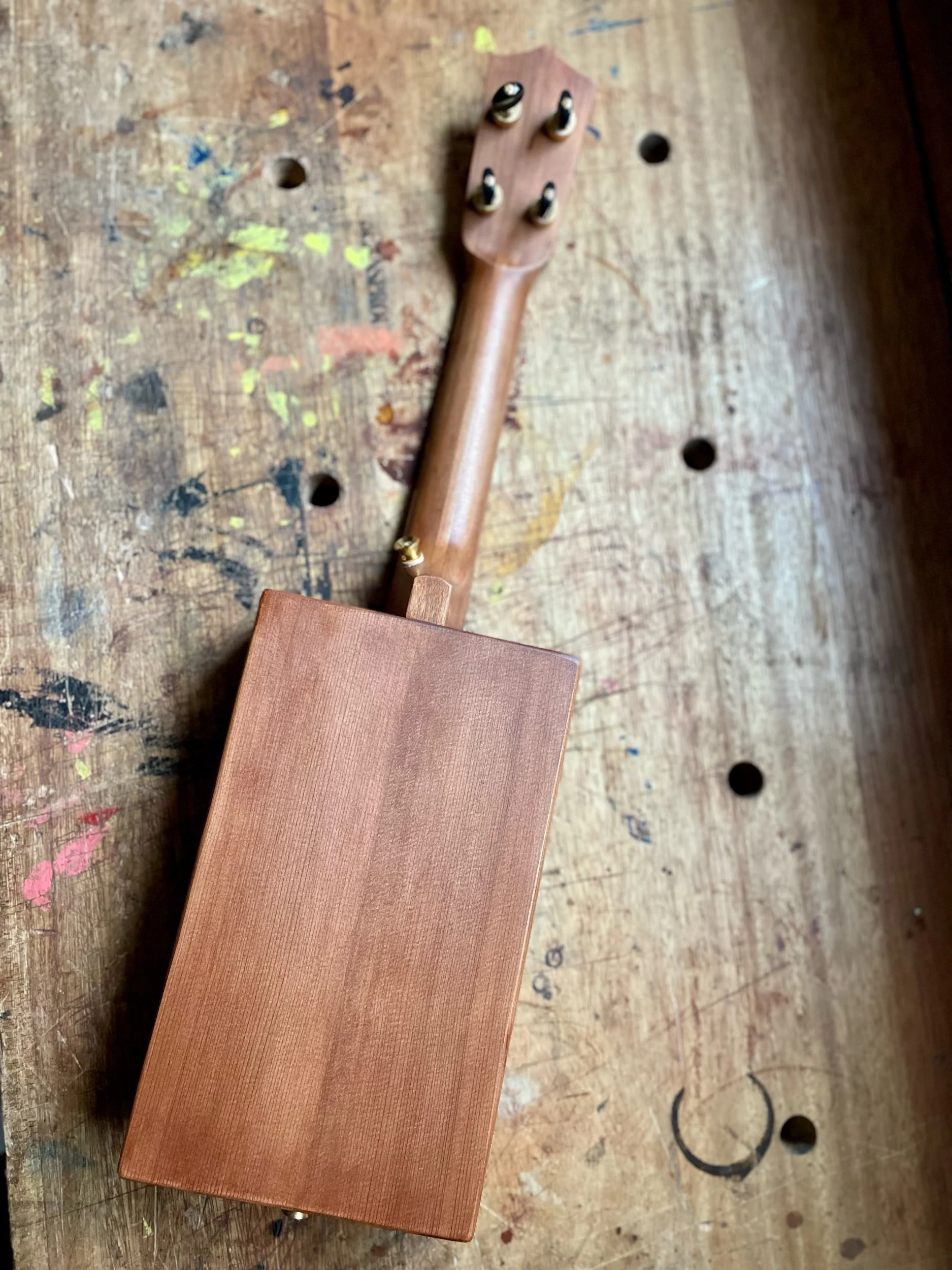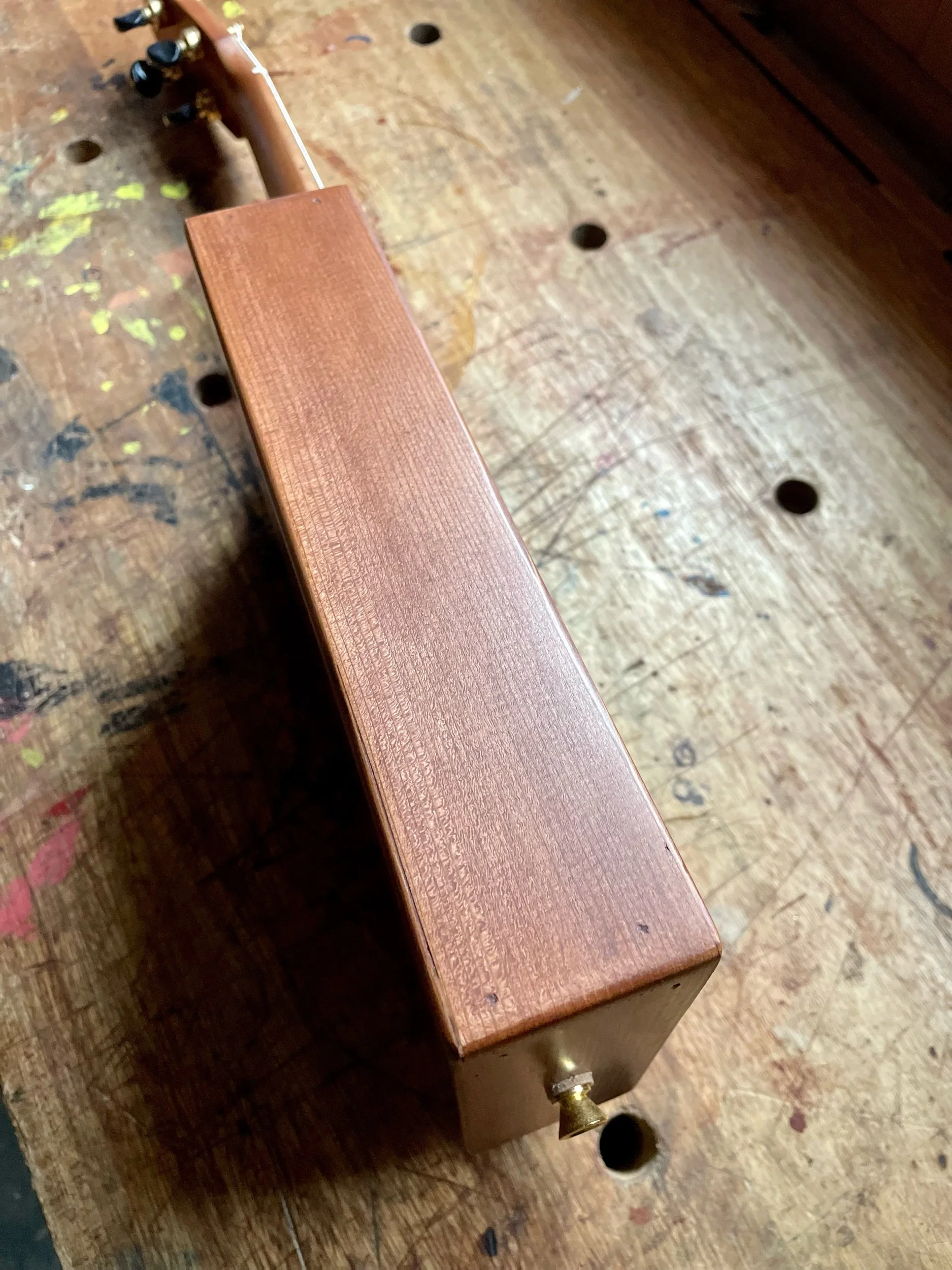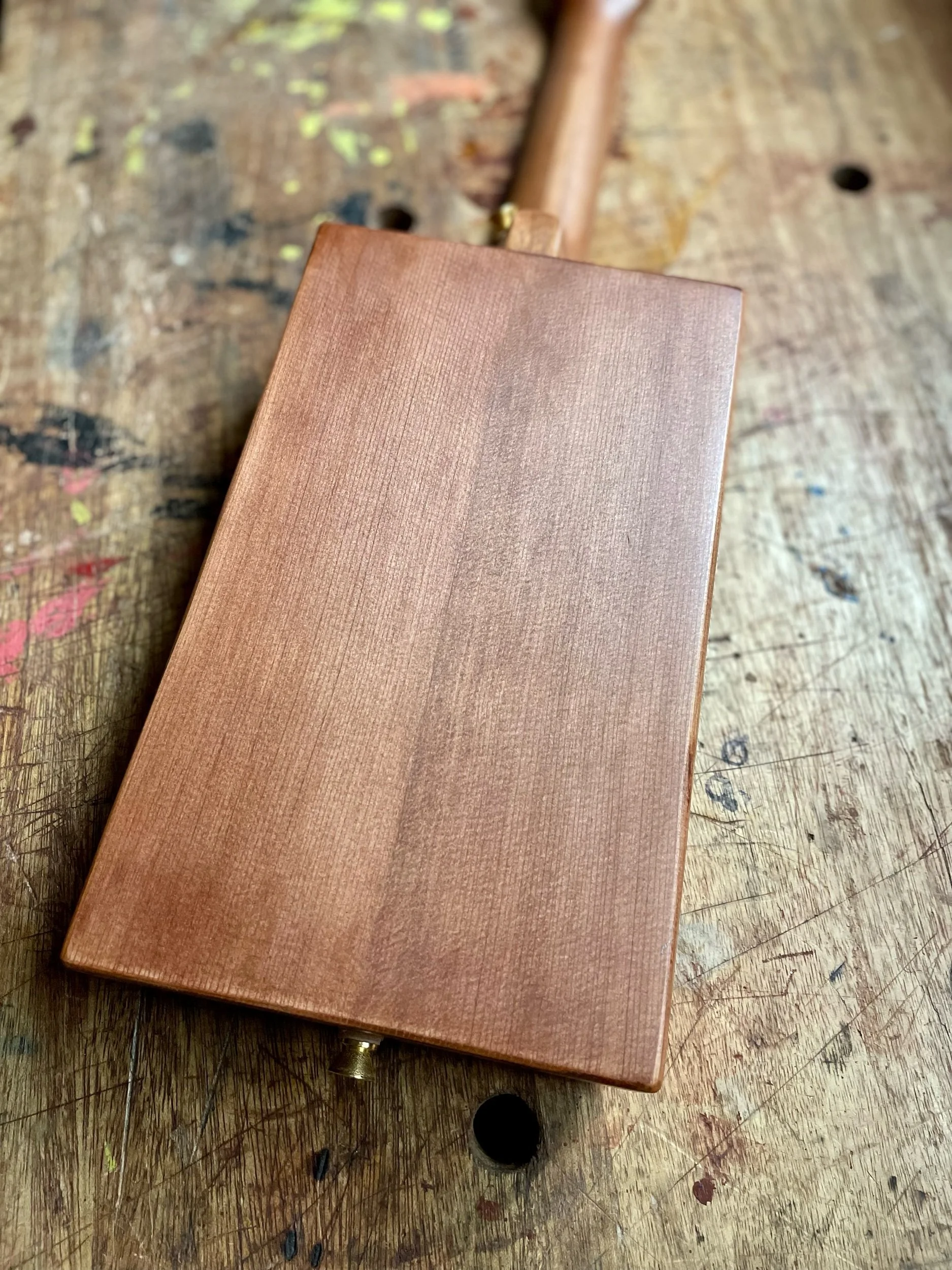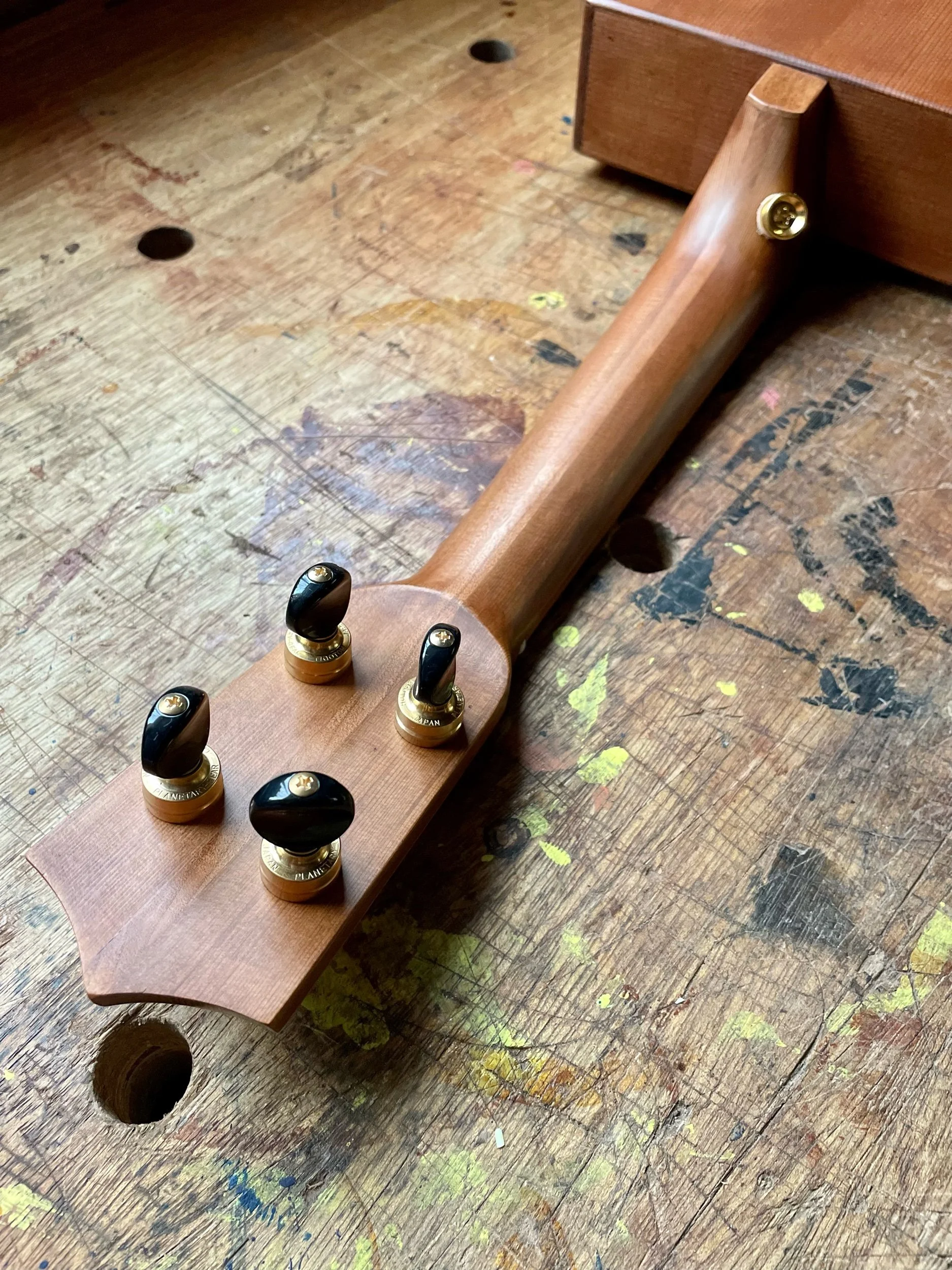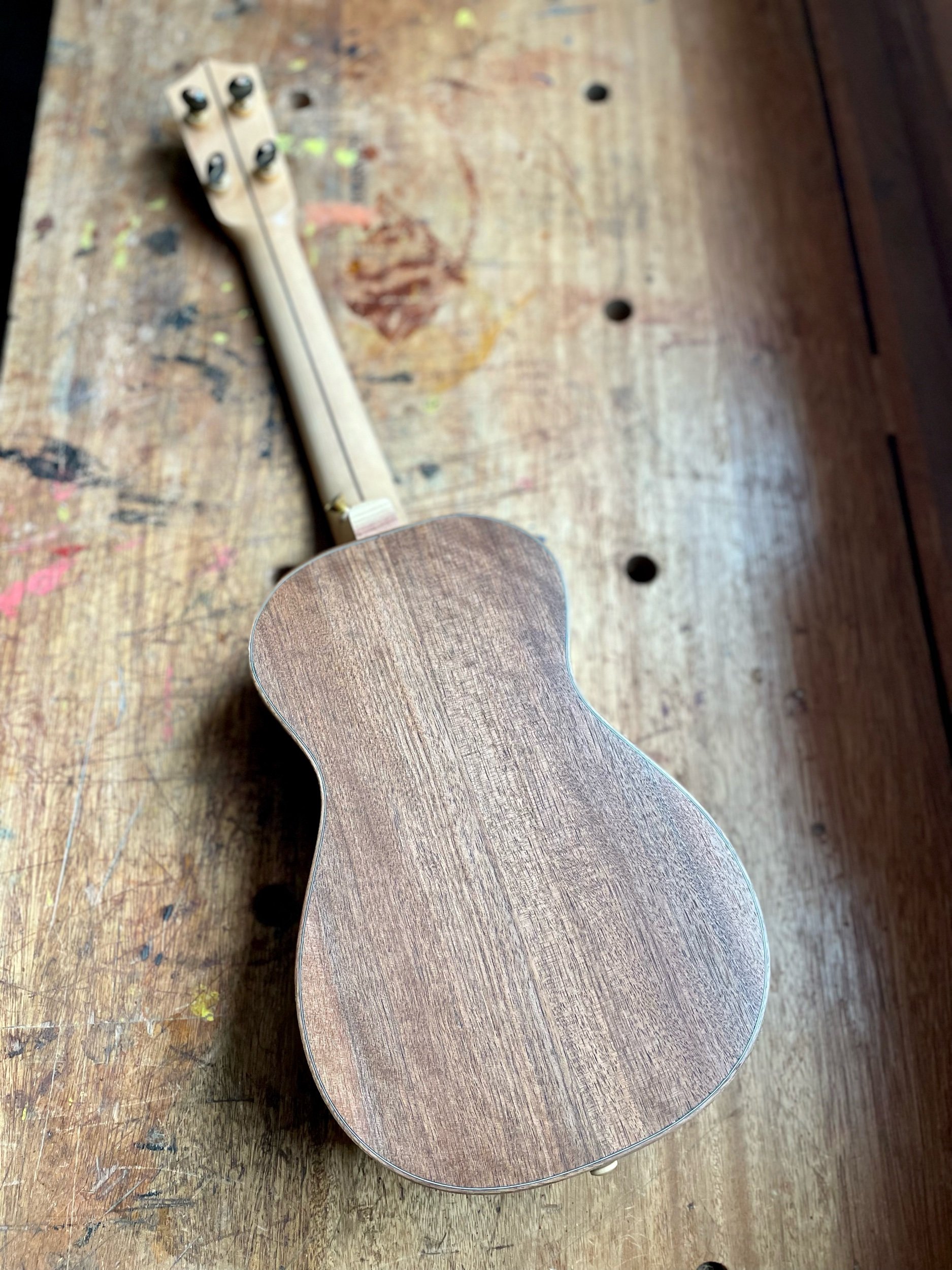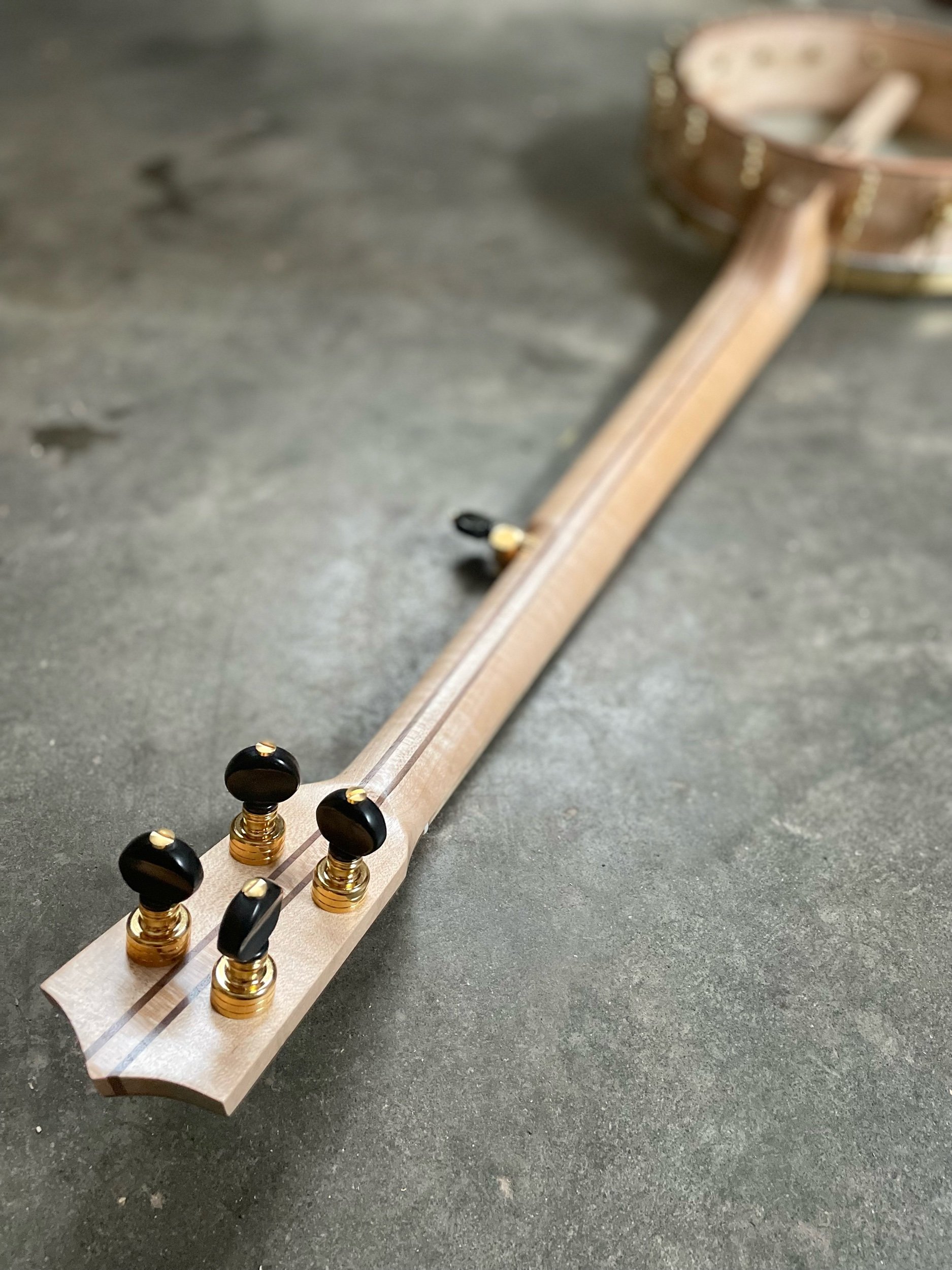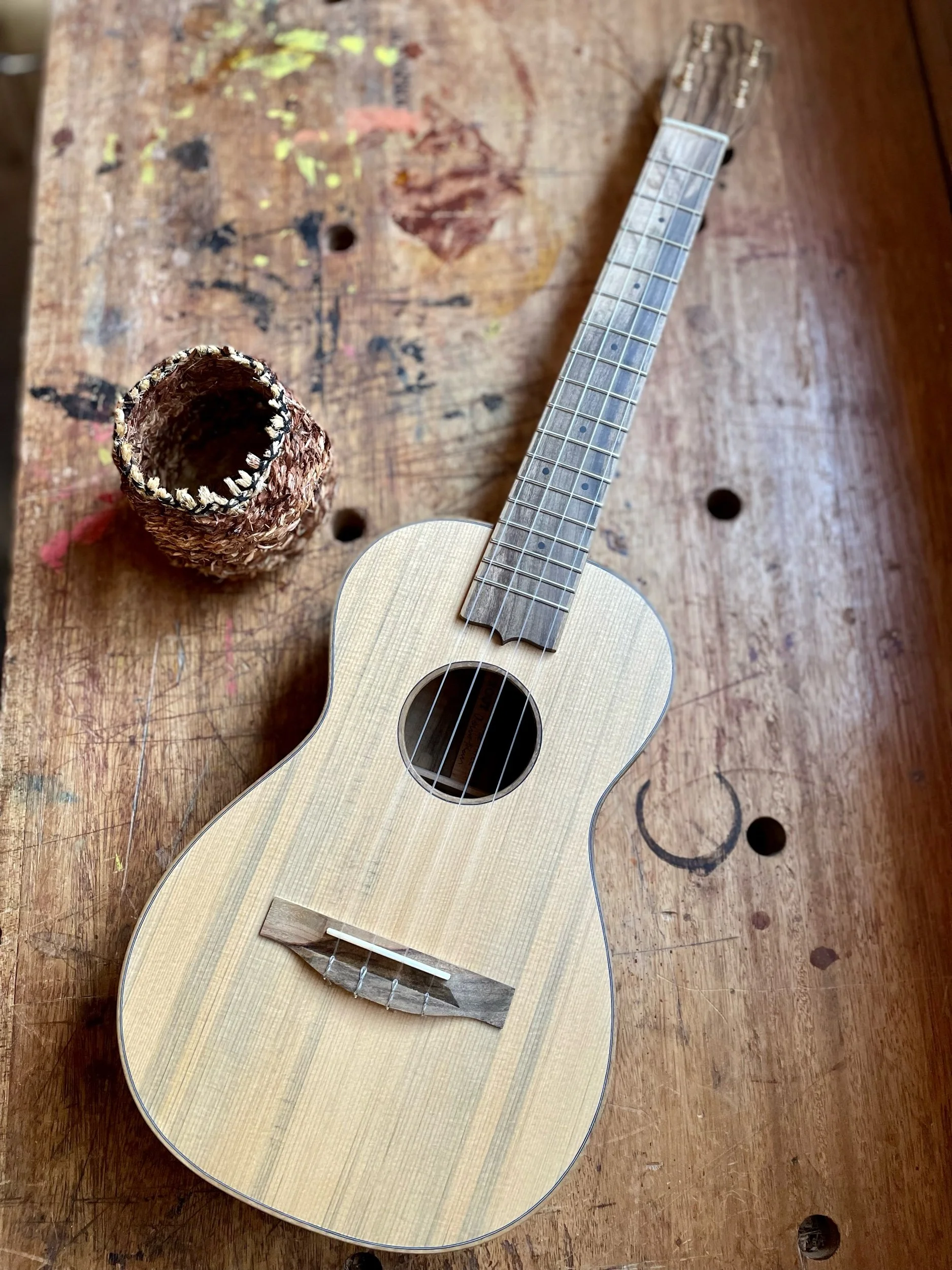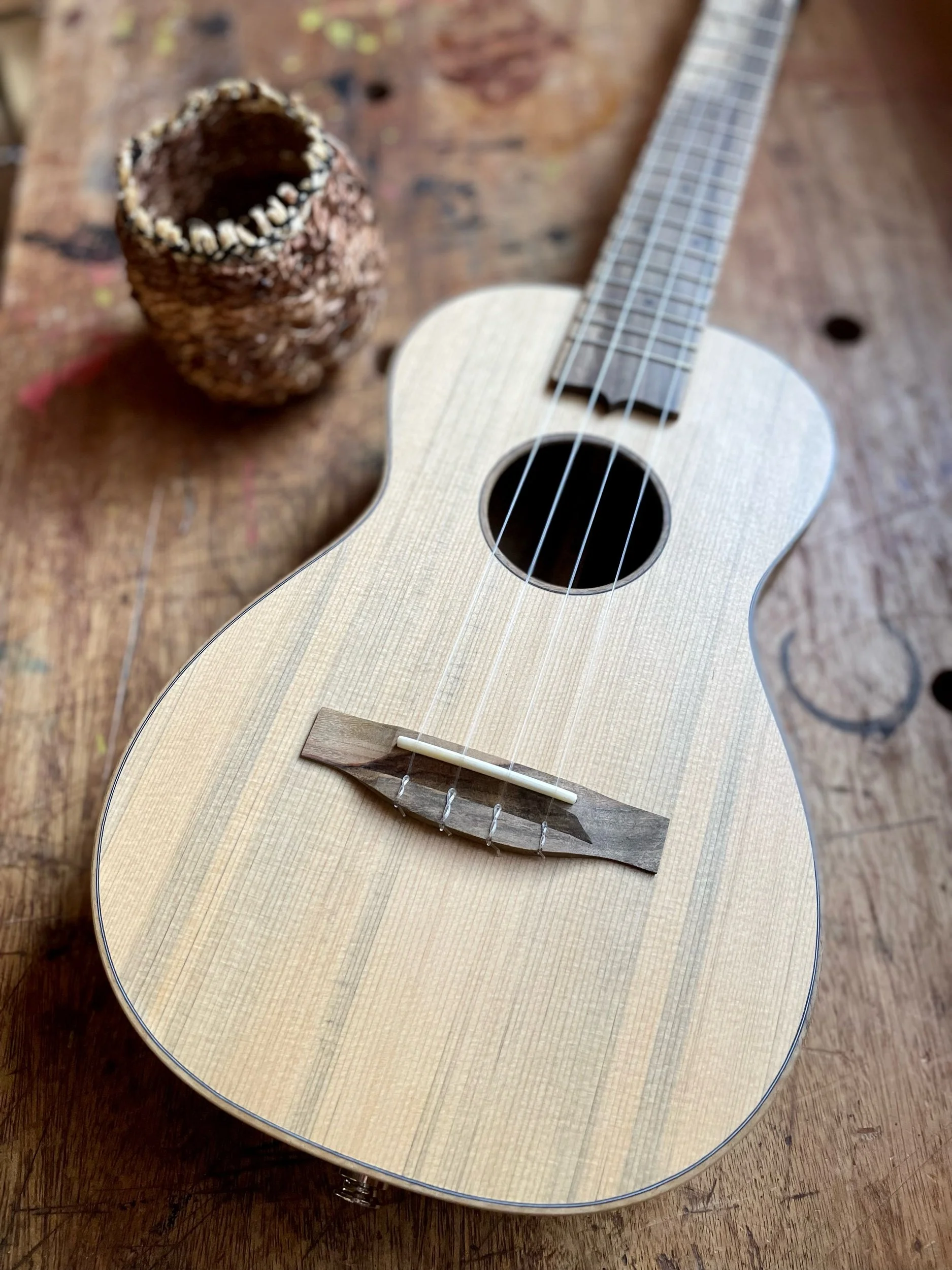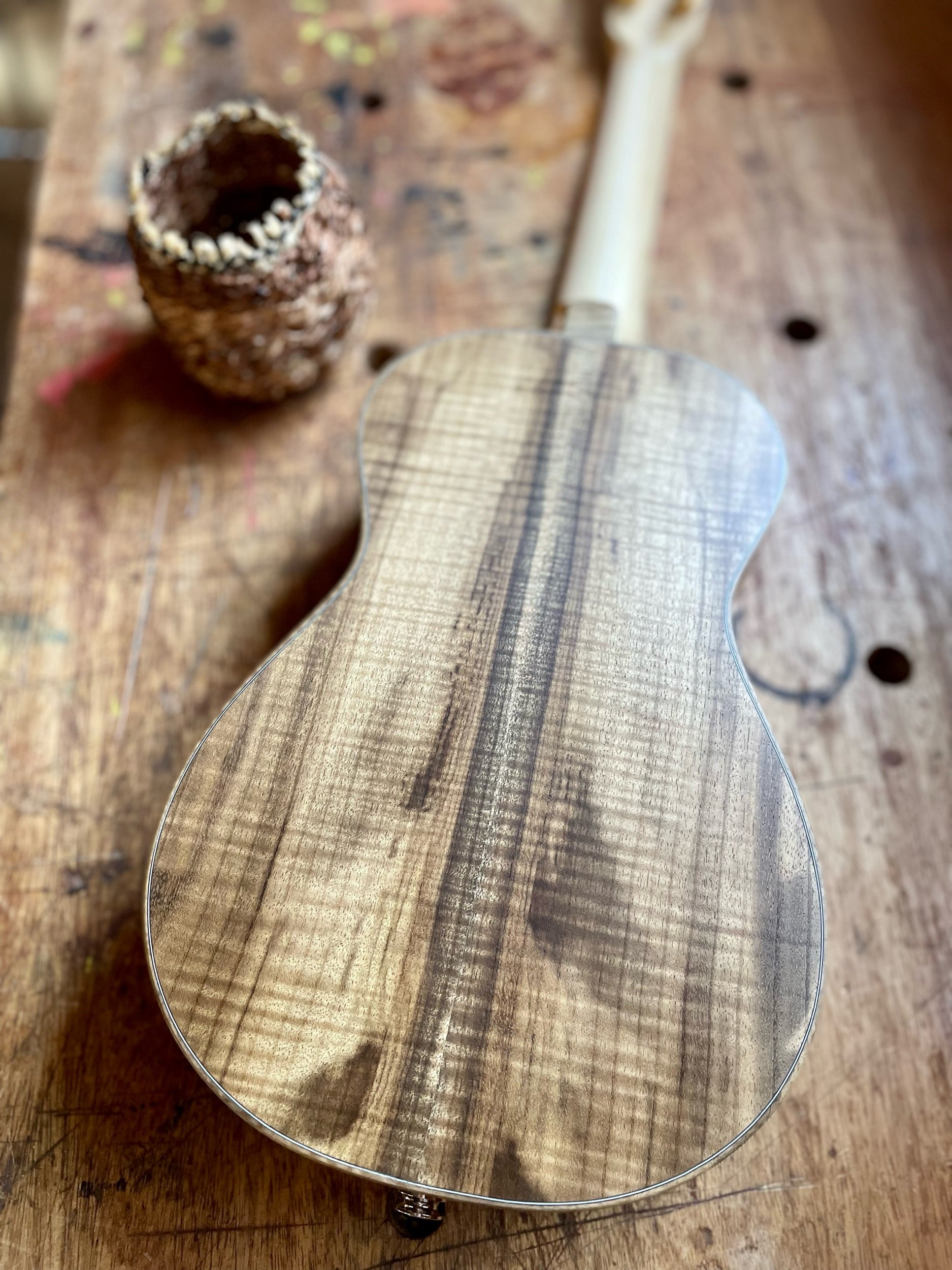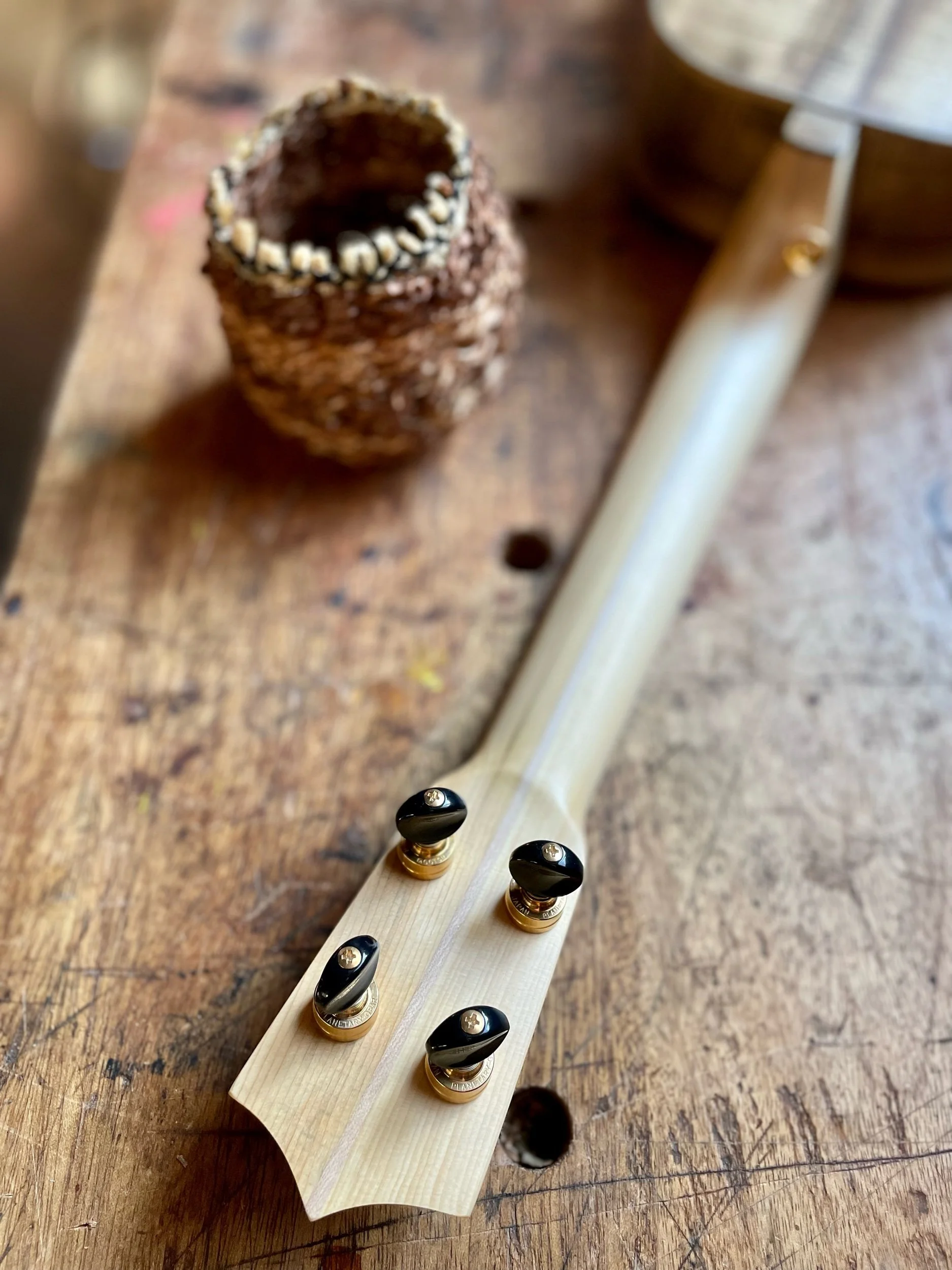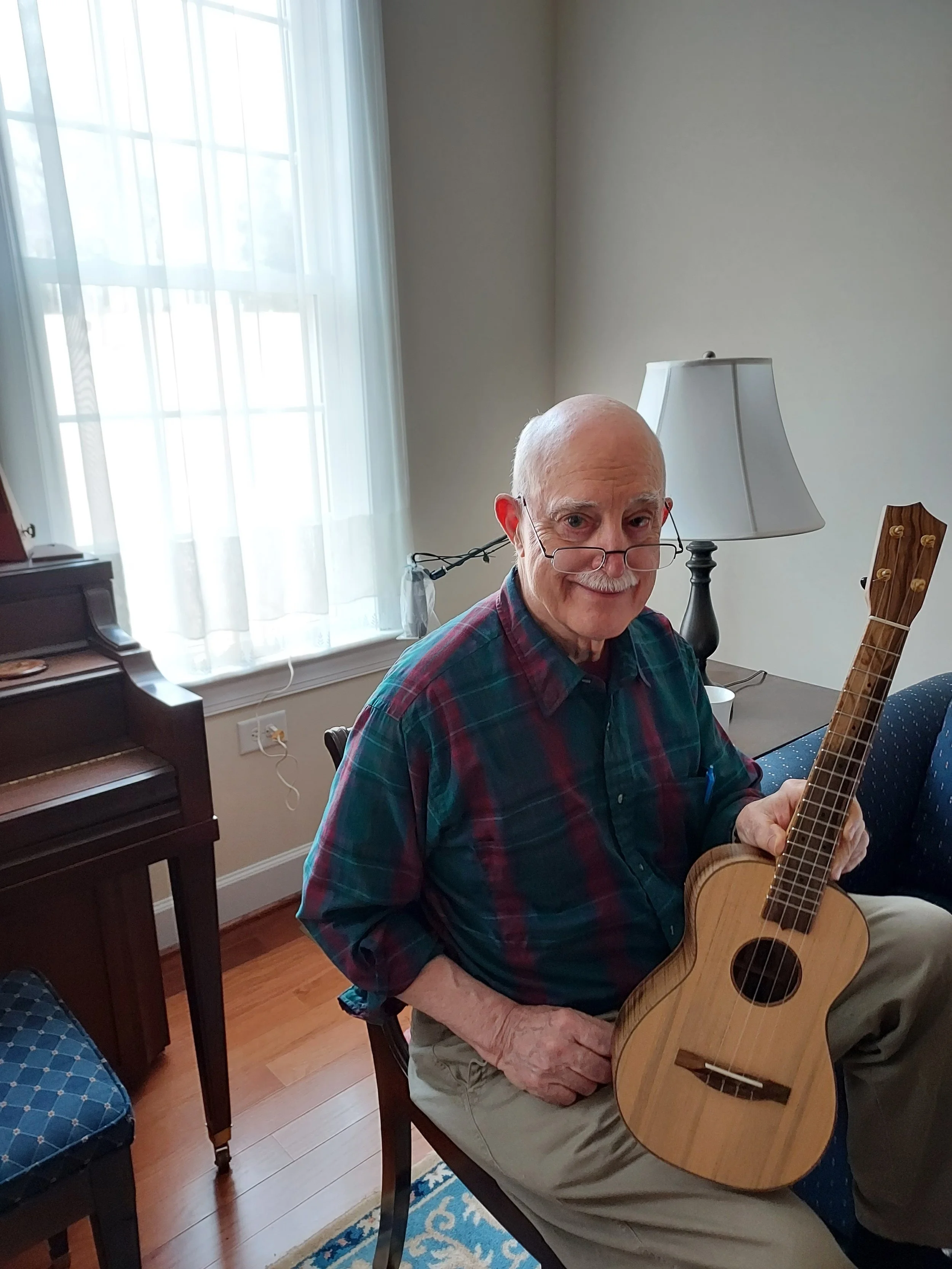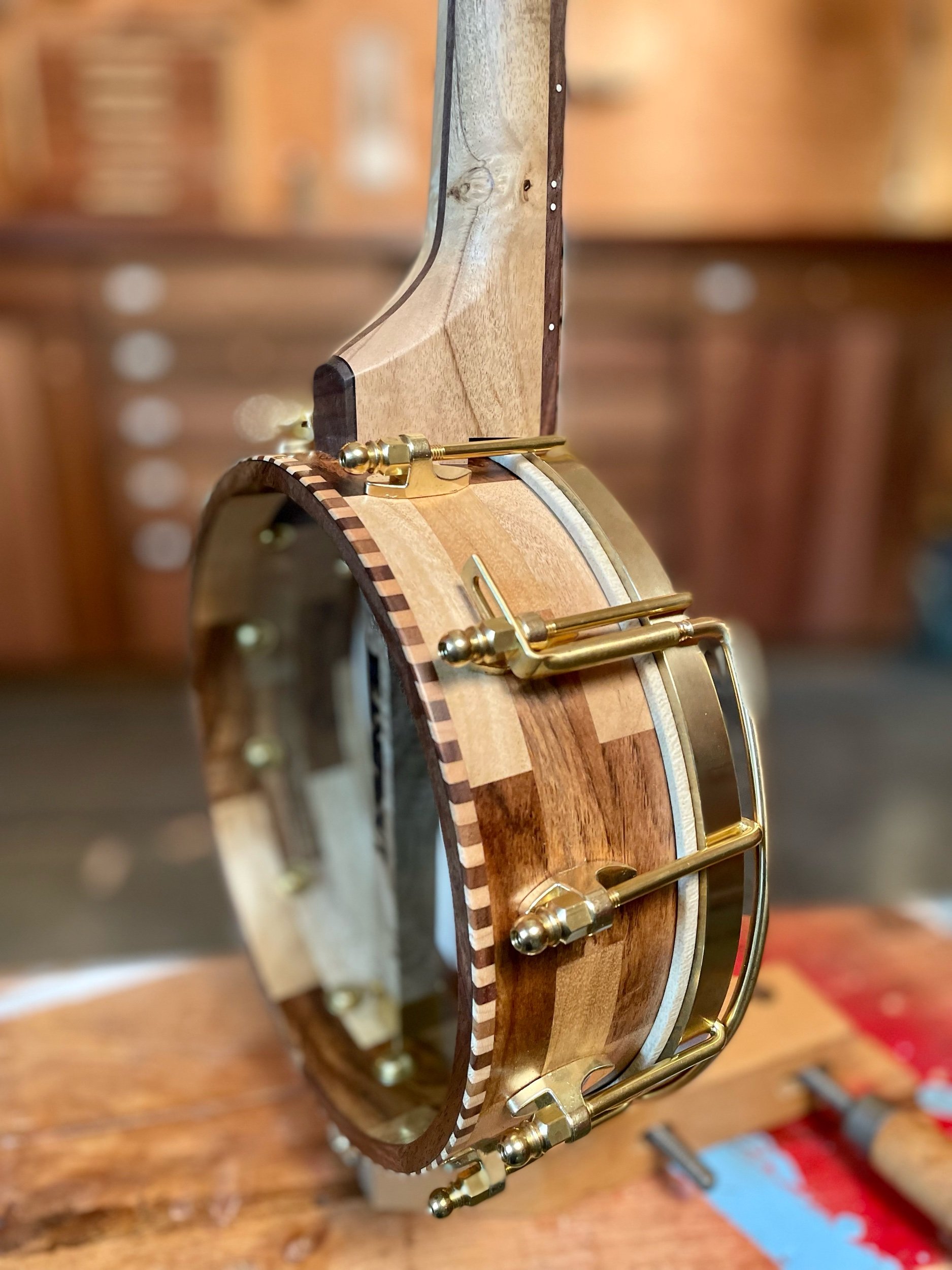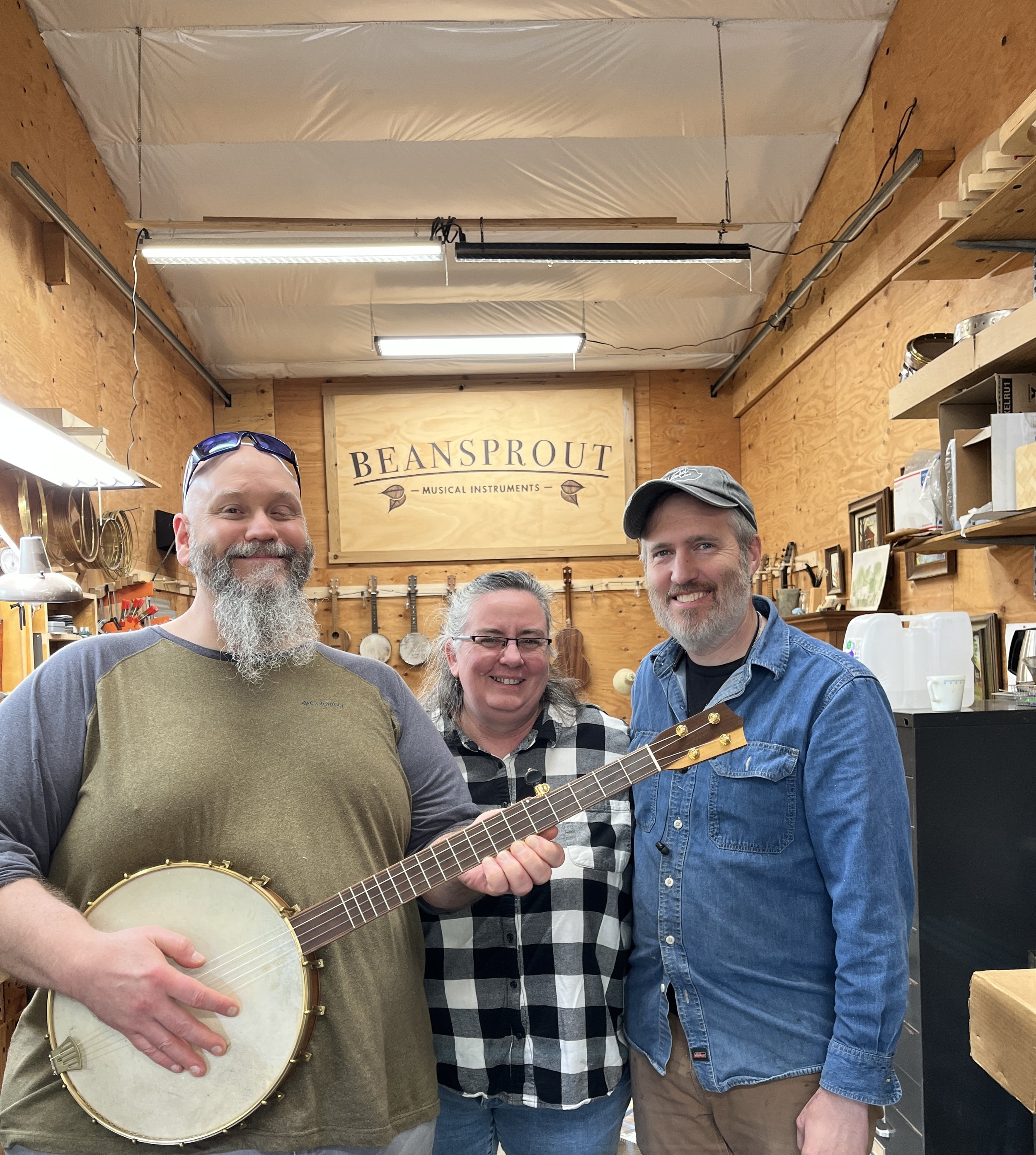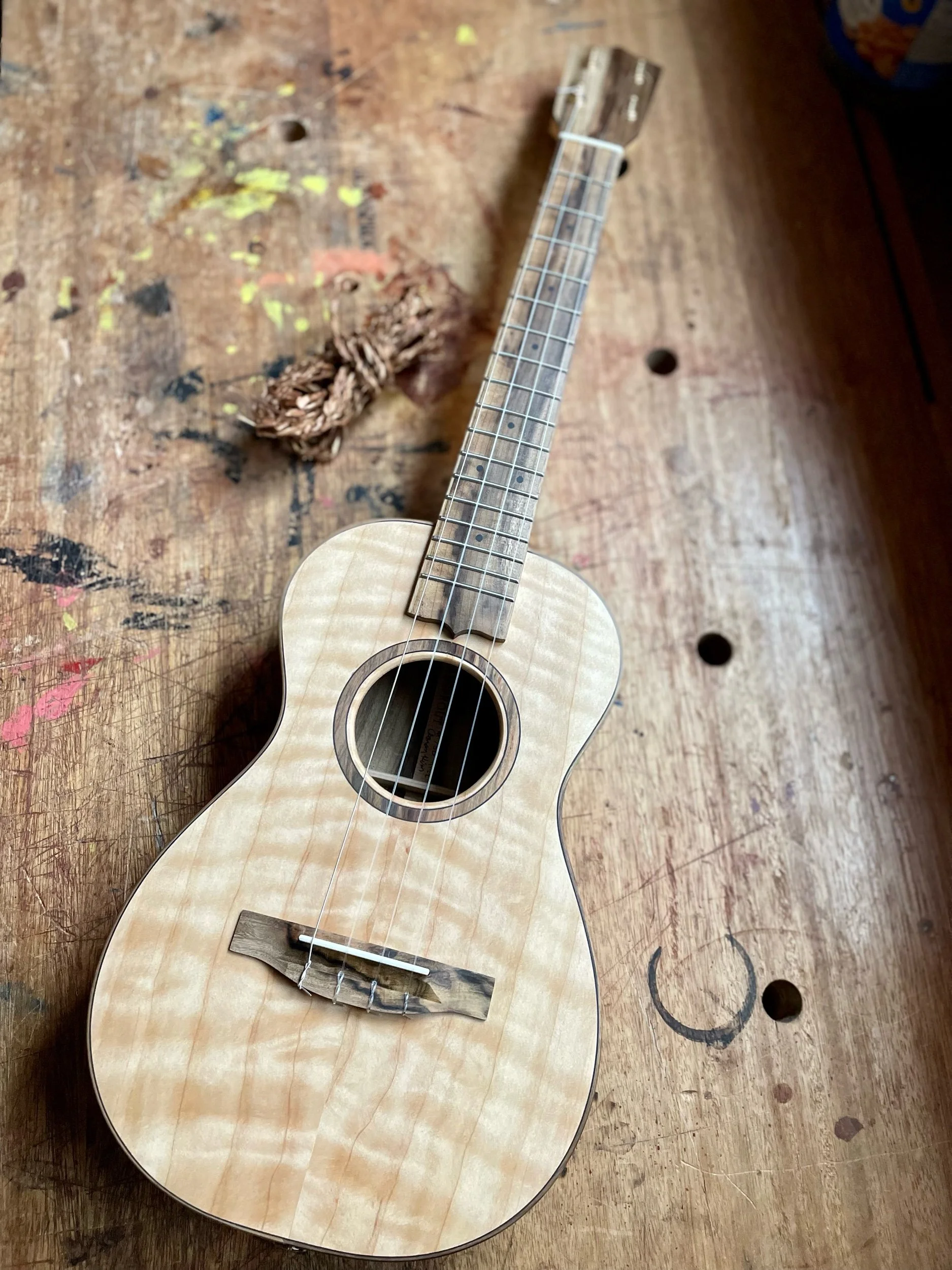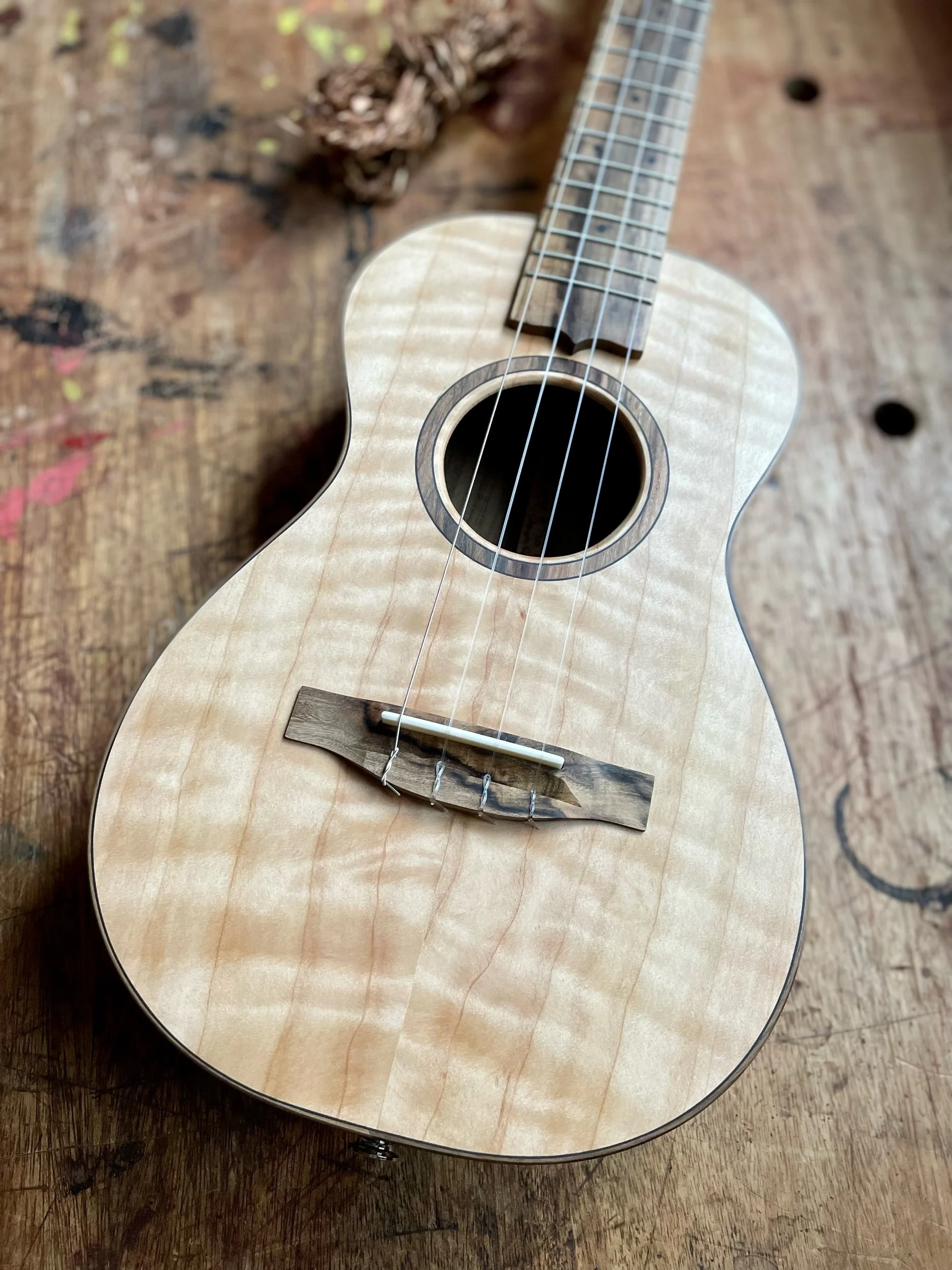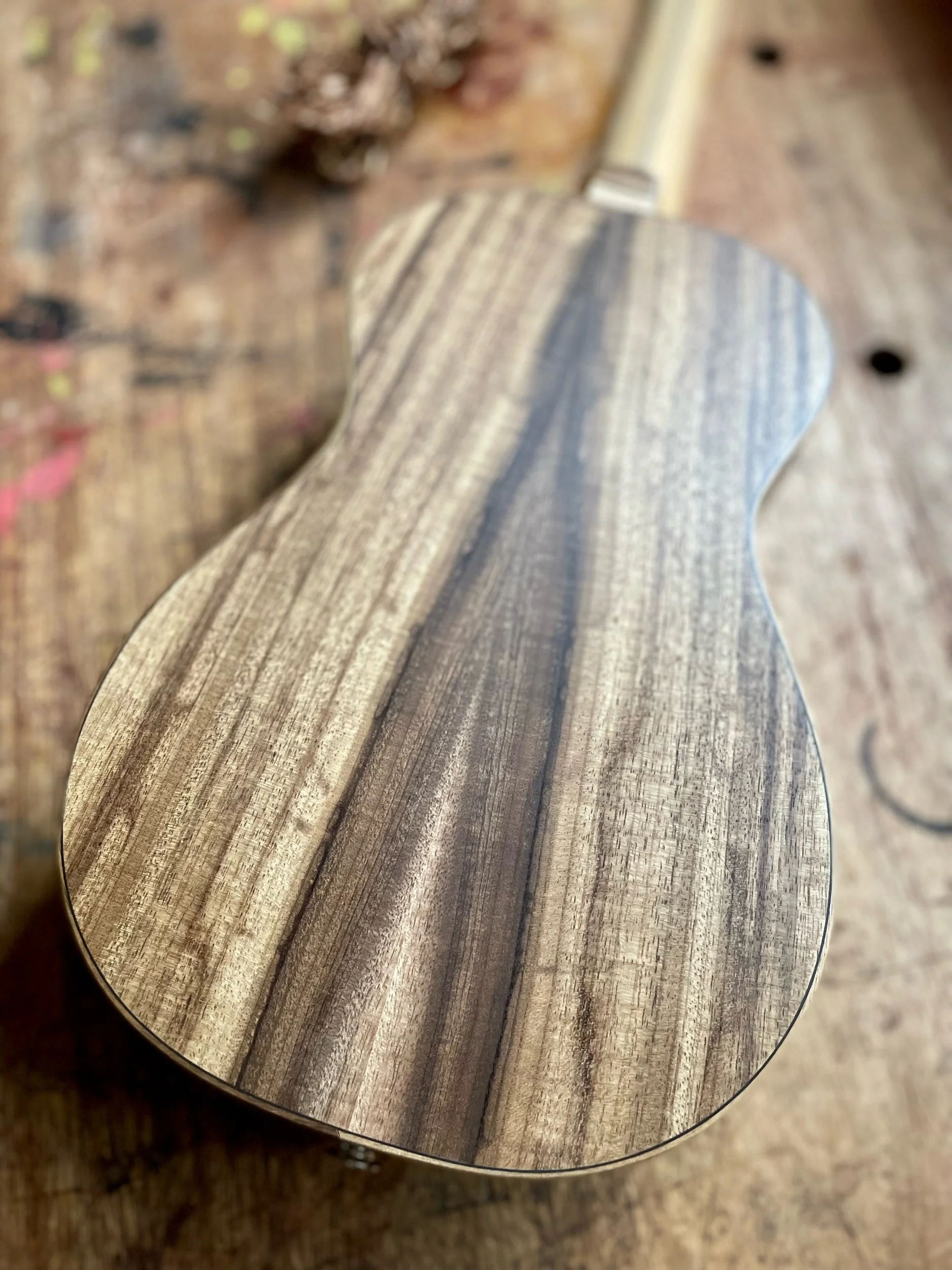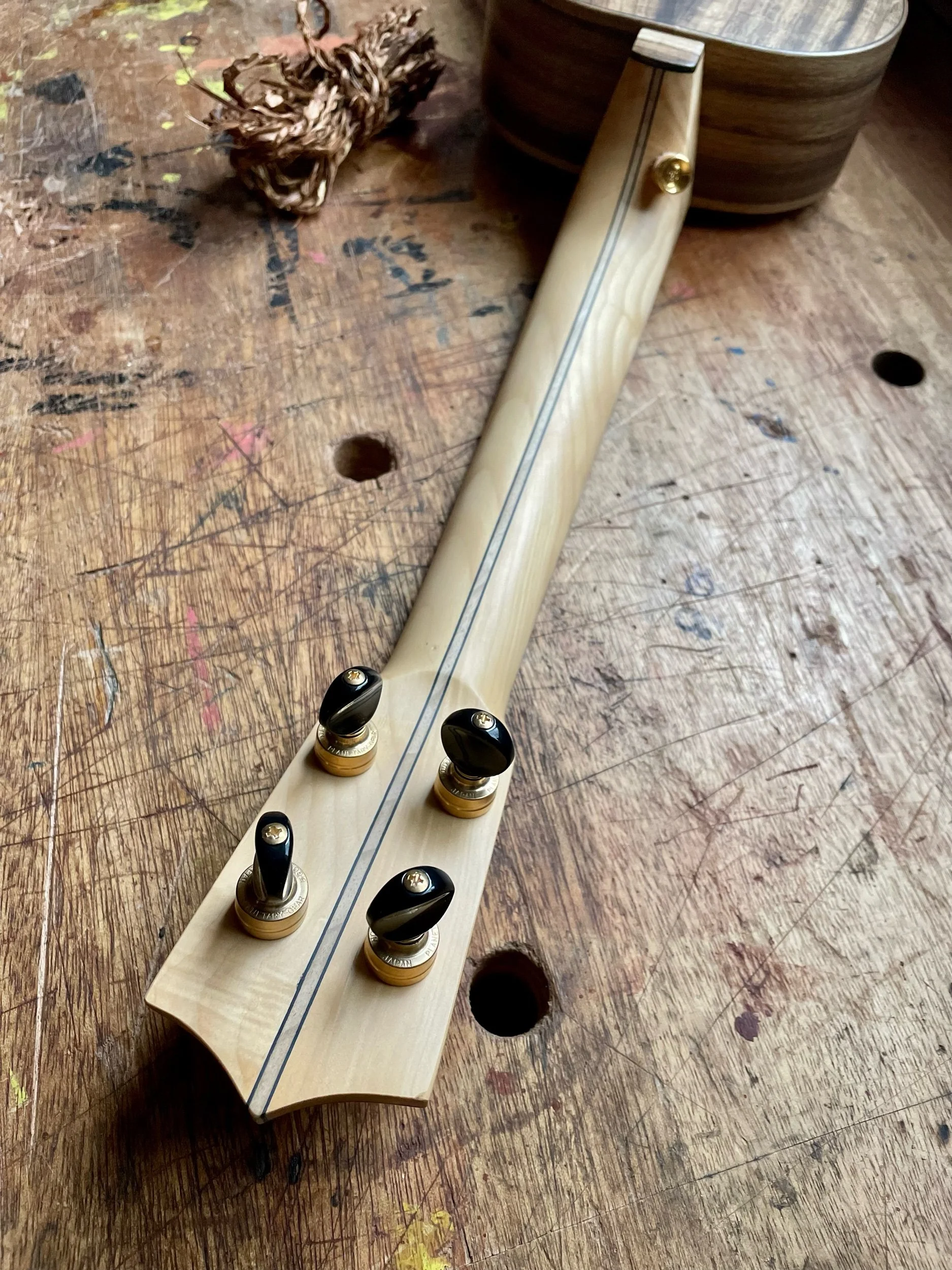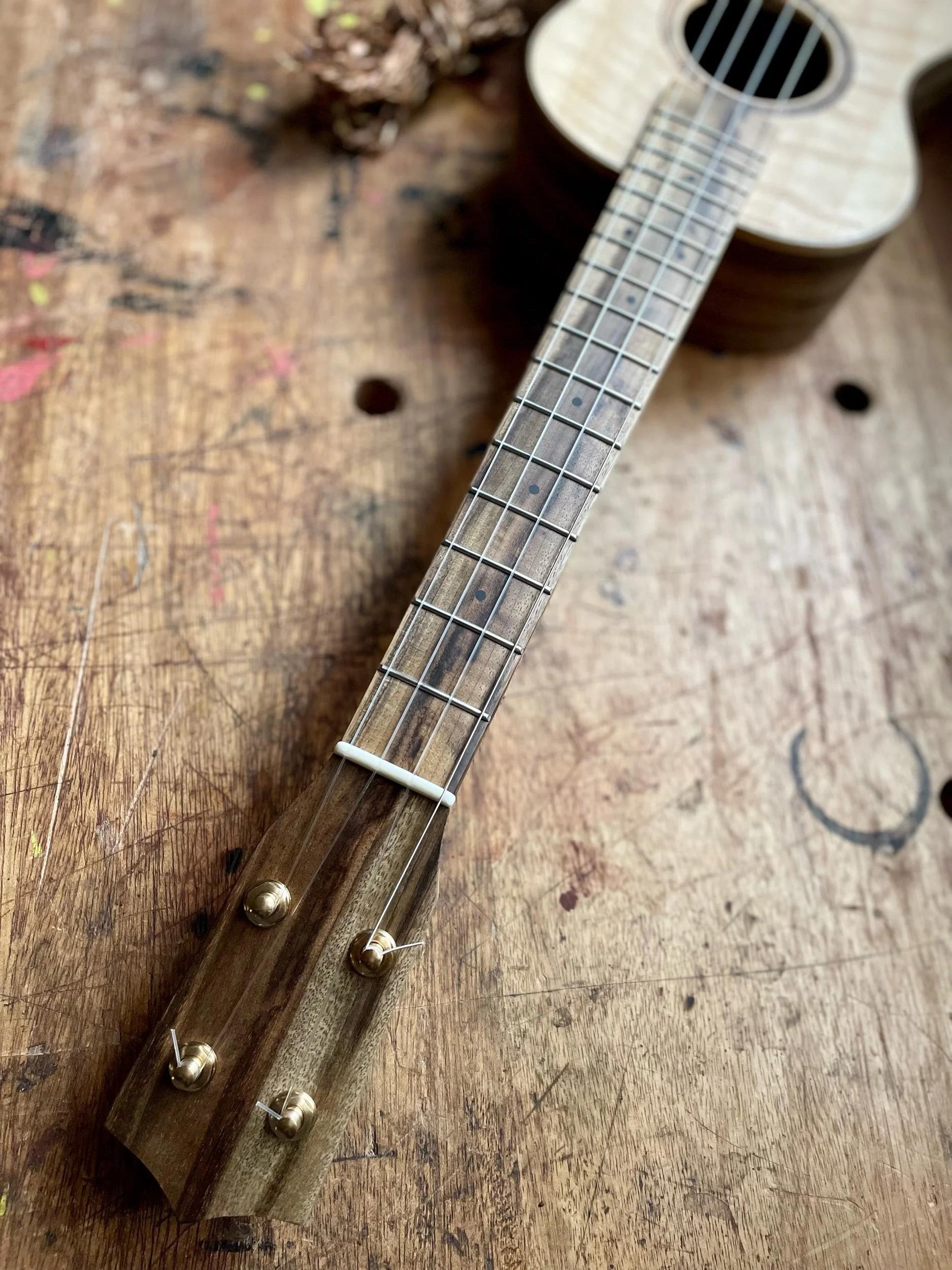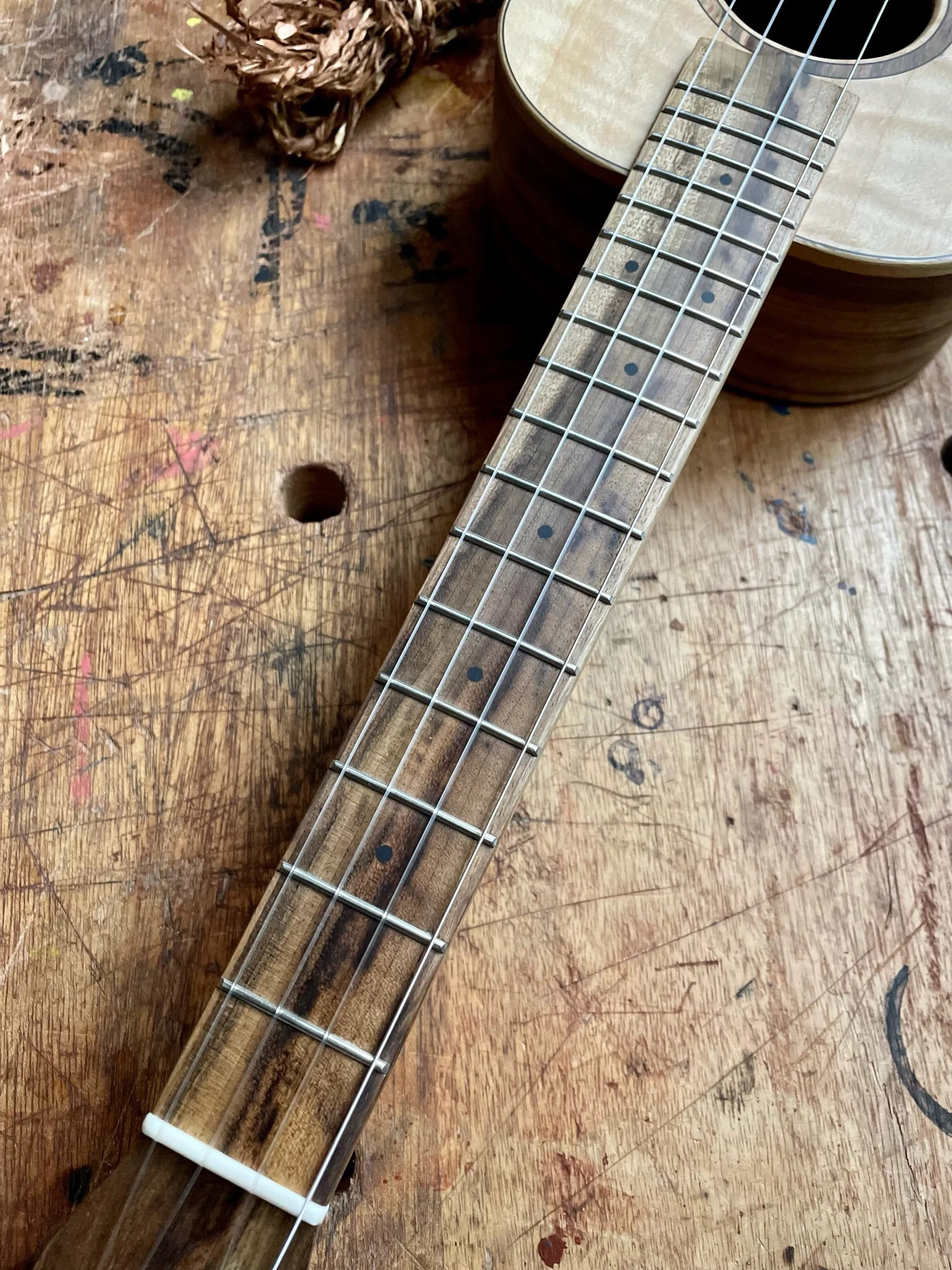This one was fun! It looks classy and is dark and rich for such a little guy. It’s a soprano scale ukulele made from shop scraps. Yellow Cedar neck and top, Curly Myrtle back and sides, Texas Ebony for the rest. It’s off to the scout list. Cheers!
“Hi Nicole and Aaron . . . I just wanted to let you know that I bonded immediately with ‘Myrtle’ #766, right out of her case! She is such a pleasure to play with and
her wood is exquisite as is her smooth satiny finish. I fully appreciate the deeper sound of this particular soprano. I knew I just needed to wait and be patient for the perfect Scout to come my way—and here she is!
Thank you for your lightening fast transaction and shipping! Aaron, your meticulous attention to detail, design and all around sense of aesthetics is quite evident in your work . . .
We’ve gotten a daily workout since the moment she arrived!
Many thanks for your beautiful creation and craftsmanship!
Play on,
J. K. ”










